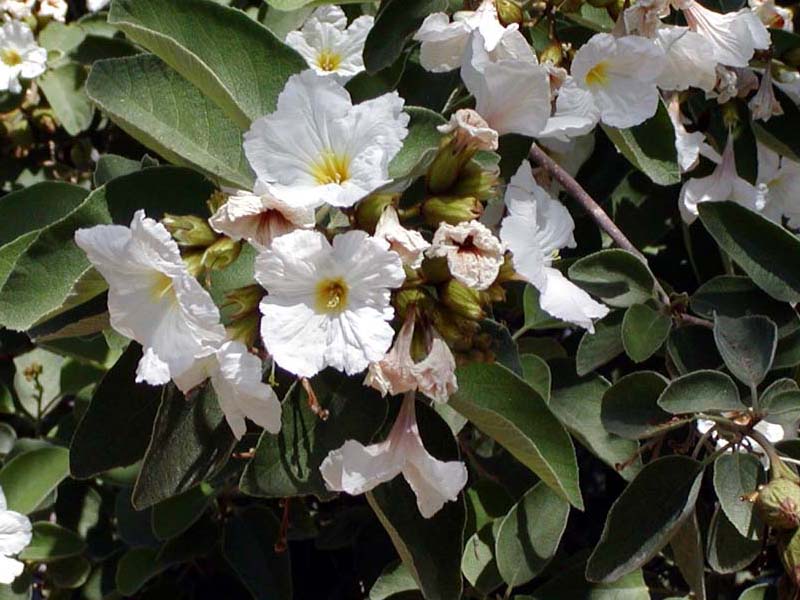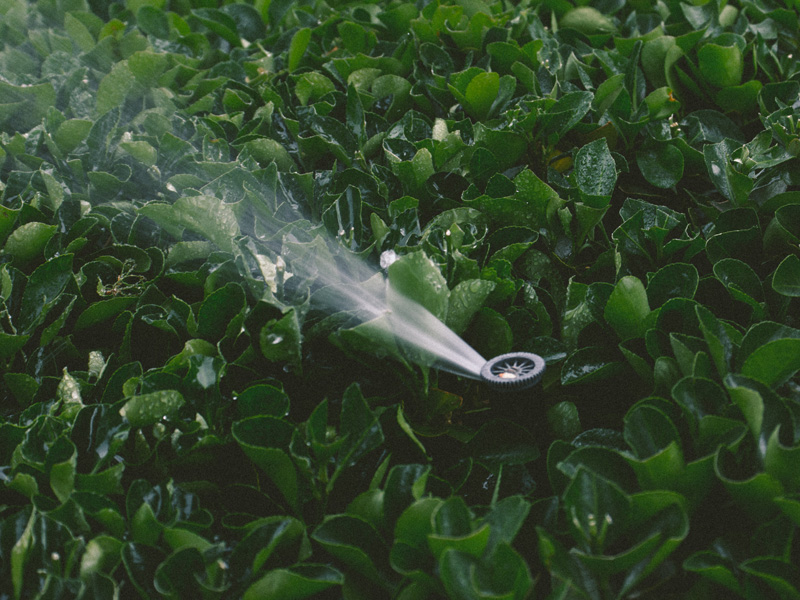This article ran in the Winter 2019 Sonoran Quarterly issue
One of the most frequently asked questions that the Garden receives is related to water and how it is used. Reducing the Garden’s water footprint and ensuring the plants the team is entrusted to care for are growing and thriving, is a priority. The Garden’s work in water conservation is never done, and staff is always exploring new ways to save one of Earth’s most precious resources. Technology could provide solutions to help advance water conservation at the Garden.
The horticulture team is in the process of evaluating irrigation methods and how smart technology could be integrated to help care for the plant collections and displays in the Garden and the Hazel Hare Center for Plant Science. Smart technology platforms within the industry vary depending on what you want to accomplish and what types of plants you are cultivating. The Garden is exploring a number of platforms that could allow water schedule management based on weather conditions, send automated alerts and alarms for mechanical failures, and create minute-by-minute reports on water usage, remote diagnostics and so much more.
In addition, horticulture is exploring a system that uses wireless sensors to measure soil moisture, salinity and soil temperature. These types of platforms can generate real-time data for Garden staff to analyze and make decisions to optimize plant care and wateruse for the living collections.
You too can make an impact at home by following these landscaping tips.
CHOOSE PLANTS WISELY
Native plants should be used for landscaping purposes, because they are adapted to thrive and grow with less water. That creates a solid foundation for working with a plant palette that naturally uses very little water. Here are a few suggested winter plantings that will thrive:

Asclepias subulata
Desert Milkweed

Sphaeralcea ambigua
Globemallow

Cordia boissieri
Texas Olive
LOCATION IS KEY
Knowing your landscape and how it behaves can assist you in making the best decisions. Before you plant, answer these questions:
- How much sunlight does this area get in the morning and afternoon?
- What type of soil profile does it have— compacted, well-draining, etc.
- When it rains, do you get standing water? If so, for how long?
- Do you have enough space for plants to grow as they mature to their full size?
- What type of watering system do you have, and can it support multiple plant forms? For example cactus, trees and vegetables require different watering amounts and schedules.
BE WATER-WISE
Evaluate your current watering system, especially when you are renovating your landscape. These easy tricks will reduce your water footprint:
- Avoid hand watering with a hose and sprinkler for your in ground plants; you have limited control over how much water is being used and if the water is actually hitting the root zones of your plants with the correct amount.
- Adjust your watering schedules seasonally. For winter, we suggest for established plants (plants in the ground for more than three years) turn off your irrigation system, especially if we receive winter rain arrives. If recently planted, deep water at least every 14 to 21 days if it does not rain.
- Consult with an irrigation specialist to review and update your system and layout to ensure you are using the most water-conscience methods to meet your plants’ needs.
Learn more about water conservation in the Sonoran Desert with Desert Landscape School.
